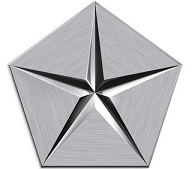Chrysler To Eliminate Model Overlap, Combine Dealerships
 In December, we reported that Chrysler was undertaking some urgent vehicle improvement steps aimed at getting their vehicles onto shoppers’ lists and coming in better than last in comparison tests. Chrysler has also reduced its vehicle lineup by cutting unprofitable models such as the Magnum, PT Cruiser Convertible, Crossfire, and Pacifica. On top of these steps, Chrysler was trying to reduce its dealer count with something called Project Alpha by encouraging more dealerships to offer all of the company’s models, rather than just Chrysler/Jeep or just Dodge. The hope was that two standalone dealers would combine into one larger one.
In December, we reported that Chrysler was undertaking some urgent vehicle improvement steps aimed at getting their vehicles onto shoppers’ lists and coming in better than last in comparison tests. Chrysler has also reduced its vehicle lineup by cutting unprofitable models such as the Magnum, PT Cruiser Convertible, Crossfire, and Pacifica. On top of these steps, Chrysler was trying to reduce its dealer count with something called Project Alpha by encouraging more dealerships to offer all of the company’s models, rather than just Chrysler/Jeep or just Dodge. The hope was that two standalone dealers would combine into one larger one.
Well, it now appears that previous steps were not enough. Chrysler Vice Chairman Jim Press said yesterday that Project Alpha would be replaced by Project Genesis. (Am I the only one who sees the irony that Chrysler’s project name has the same name as an upcoming competitor to its Chrysler 300, the Hyundai Genesis? It’s like GM coming up with Project Tundra.) Chrysler executives have described Project Genesis as “Project Alpha on Steroids.” (Again, this sounds like a lack of sensitivity to the steriod controversy making headlines throughout the sports world for the past few years. Anything “on steroids” is not a good thing.)
Chrysler is going to basically take a page out of GM’s playbook for its Pontiac-Buick-GMC channel strategy: eliminating overlapping models, but making up for it by offering models in all segments if the dealer offers all three brands. In simple terms, if a dealer wants to sell a full lineup, they will have to offer all three brands. The dealers who don’t combine will be starved for product and likely have to close their doors or merge with another dealer later anyway.
In theory, this sounds like a good idea. Instead of devoting resources to a Dodge Avenger and a Chrysler Sebring, there will be one midsize car sold under one brand. Instead of a Dodge Nitro and Jeep Liberty, there will be one midsize SUV. Supposely, the company is specifically concerned about overlap in crossovers, SUVs, and cars. A move like this will not only help reduce the dealer count, but should allow Chrysler LLC to focus its resources on one above average product rather than two average products. Reducing the dealer count would also allow each of the remaining ones to sell more vehicles and not have to resort to selling vehicles at extreme discounts just because the dealer down the road is sellng for less.
Project Genesis has no timeframe, and the company will not open its pocketbook for settlements to encourage dealers to close. Instead, it sees its role as more of a facilitator, helping two rival dealers work together to combine operations. A side benefit of the strategy will be that although some models are eliminated, the company plans to add some new models for market segments they do not compete in. A few examples I can think of include subcompacts, compact cars that don’t look like trucks (ahem, Caliber), full-size crossovers, and luxury cars above the Chrysler 300.
The product strategy might work, but the medium-term result will be reduced sales; just like Buick’s sales took a beating in 2007 due to the loss of three models (Terraza, Rainier, Rendezvous) in spite of their replacement by the excellent Enclave, just because the company says “you used to buy an X, but now you should buy a Y” does not mean that consumers will listen. When GM shuttered Oldsmobile, the Oldsmobile website for years showed alternative GM models. Meanwhile, GM basically ceded that marketshare to competitors. Anecdotally, I know someone who works in what was a small Oldsmobile dealership, and almost all of their Olds customers bought Toyotas for their next car instead of Buicks.
The dealer consolidation plans will also not be easy to implement, especially without Cerberus putting some cash into the mix. Talk is nice, and many dealers agree there are too many franchises, but nobody wants to be the one to shut down. Also, having no deadline or even milestones will not make this something easy to implement. Personally, I work much better knowing I have a hard deadline looming than when someone asks for something “when I get a chance.” From 2004 to 2008, Chrysler’s Project Alpha managed to reduce the dealer count from 4,000 to about 3,600, or 10%.
“The New Chrysler” has not yet proven that it has the ability to execute its bold plans. All of the most recent launches (Avenger, Sebring, Compass, Patriot, Town & Country, Grand Caravan, 2009 Ram, 2009 Journey) were designed, engineered, and built during the previous DaimlerChrysler regime, so we’ll see if the “dream team” of top managers that Cerberus hired to run Chrysler (specifically Jim Press and Bob Nardelli) are able to execute everything that they say they will.




